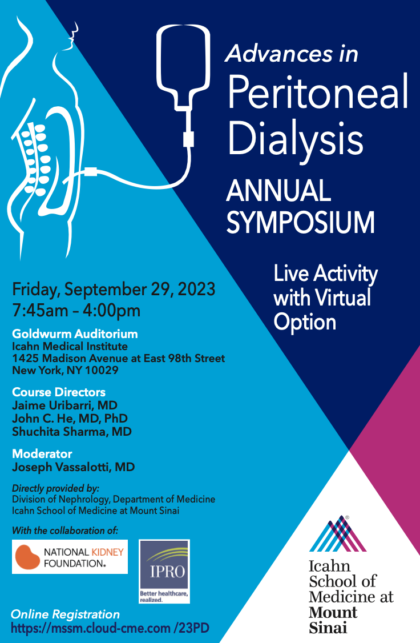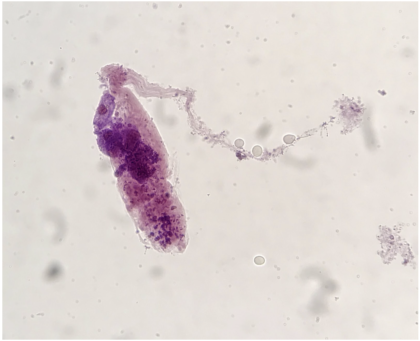2024 NephMadness Tournament Challenge: Bracket Submissions Due March 31st!
Continuous renal replacement therapy Education Module
Applications open for the WIN Fellow School for Leadership Education
American Transplant Congress 2024: Medical Student & Resident Travel Grant Applications Due 3/11
High Output Cardiac Failure and Pulmonary Hypertension in Kidney Transplant Recipients
The first annual NephMadness Invitation Tournament (NIT) is coming to the National Kidney Foundation 2024 Spring Clinical Meeting (SCM) in Long Beach, CA!
Skeleton Key Group Case #32: Hitting the Reset Button on Hyponatremia
2024 NephSIM Nephrons: Applications Due 11/15
Skeleton Key Case #31: Paralyzing Potassium
Tricky Testing in the Patient on Hemodialysis
James Bannister, Resident, Sunderland Royal Hospital, UKJamie Willows, Renal Fellow, Sunderland Royal Hospital, UK Introduction When patients on dialysis are admitted to the hospital with a broken bone or a pericardial effusion, for example, they need at least…
2023 Advances in Peritoneal Dialysis Annual Symposium (Hybrid): Friday 9/29, Free for Trainees
Register here (Trainees: $25 in person, FREE for virtual attendance) Date & Location:Friday, September 29th (7:45A – 4P) Hybrid: Virtual + Goldwurm Auditorium (Icahn Medical Institute, 1425 Madison Avenue at East 98th Street New York, NY 10029) Course…
Cylindroids in Urine, Have You Ever Seen It?
The German Louis G.F. Thomas (1838 —1907) described “cylindroids” (Figure 1) in 1870 to indicate elongated elements partly similar to casts [1], the nature of which is still unclear at present . There is no consensus on the…
Midwest Transplant Symposium: October 13-15 (Travel Grants Available!)
The Midwest Transplant Symposium will be held at Washington University in St. Louis, MO from October 13 – 15, 2023 and provide an annual review and update on kidney transplantation with workshops in immmunology and pathology. See the…
Free Thrombotic Microangiopathy Workshop During Kidney Week
The US Thrombotic Microangiopathy Alliance (USTMA) consortium is organizing a TMA workshop on October 31st, noon – 4 pm at Sheraton Philadelphia Downtown, or attend virtually. This will involve interactive case-based discussions with focus on the following: Pregnancy-associated TMA Cancer-associated TMA…
Scraping the Bottom of the Barrel in Patients with Exhausted Vascular Access: Unconventional Sites for Hemodialysis Arteriovenous Access Creation and Catheter Placement
Mohammad Ahsan Sohail, MD Nephrology & Hypertension Fellow PGY-5 Department of Kidney Medicine, Cleveland Clinic Tushar Vachharajani, MD, FASN, FACP Chair, Department of Medicine, John D. Dingell Department of VA Medical Center Vice Chair, Department of Medicine, Wayne…
Pericardial effusion detected on point of care ultrasound: What next?
Abhilash Koratala, MD Medical College of Wisconsin In previous posts, we explored the identification of pericardial effusion through different cardiac windows using POCUS. Now that you know how to identify the effusion, let’s delve into the key findings…
Shared Decision Making in Dialysis Vascular Access
Dr. Avinash Rao Ullur, MD, Clinical Fellow in Nephrology, University of Toronto, Canada avinash.raoullur@uhn.ca Acknowledgements:This post is part of a collaboration between The Renal Fellow Network and the American Society of Diagnostic and Interventional Nephrology (ASDIN), whose mission…
UAB CRRT Academy Information!
We’d love for you to join this year’s UAB CRRT Academy, which will take place on September 6th – 8th, 2023 as a live in-person conference in Birmingham, Alabama. In addition to our usual program of lectures, hands-on…
Pathology of COVID-19 in the Kidney
Patrick VostersMedical Student, Medical College of Wisconsin – Green Bay The coronavirus disease 2019 (COVID-19) pandemic constitutes one of the most disruptive events in recent history. Amidst the pathological, political, and social turmoil, the kidney was not spared….









